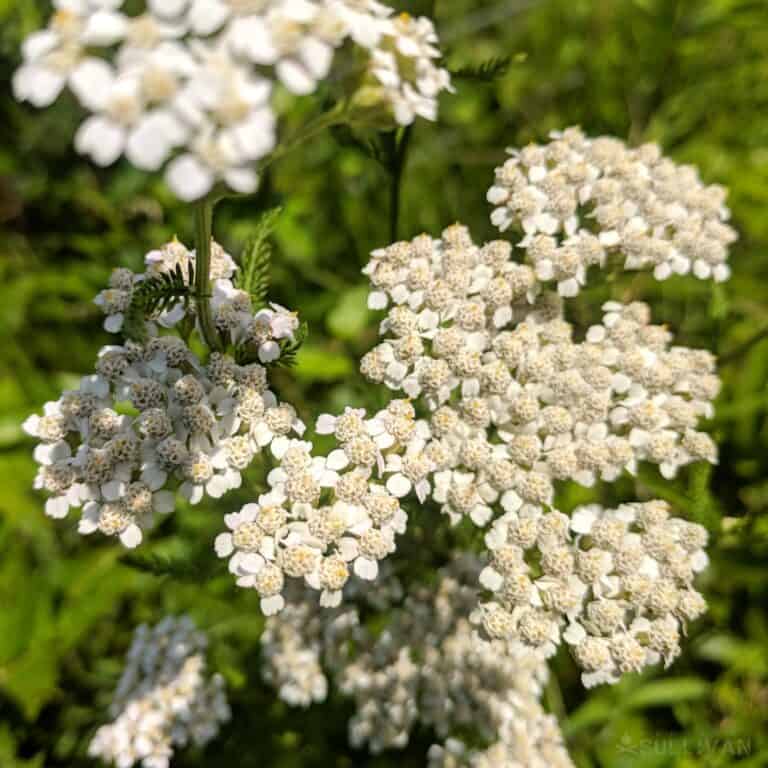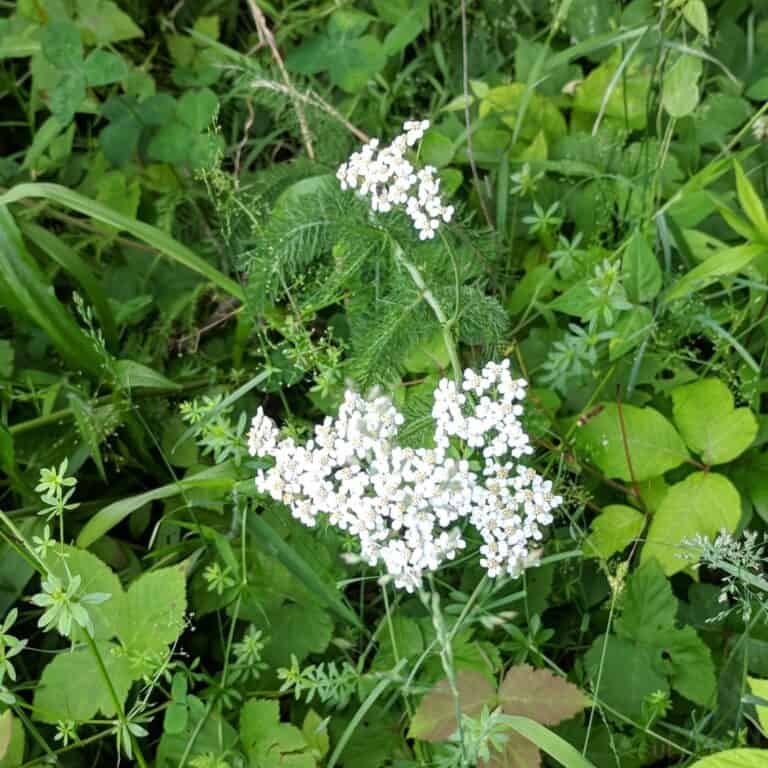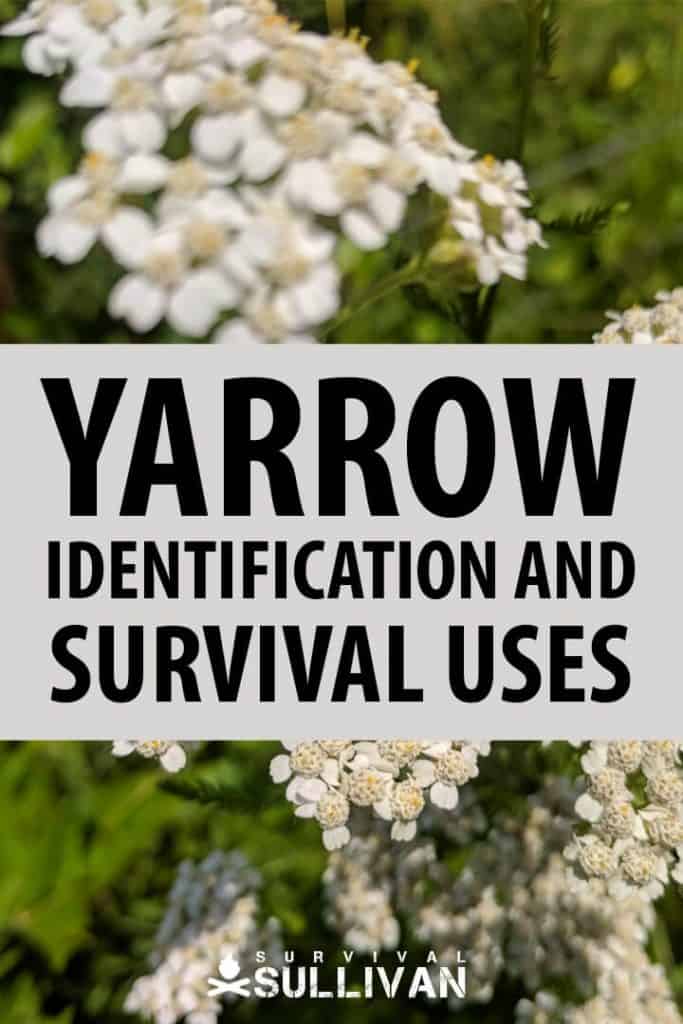If you have dismissed wild yarrow as simply an annoying weed, you are missing out on a free source of healing power that should be a vital part of your survival medicine plan.

Yarrow is on of the most powerful natural astringents on the planet. For centuries it has been used to control blood flow from soldiers wounded on the battlefield.
All of the parts of a wild yarrow plant that grow above ground can be used to make natural medicine. Although yarrow is edible, this healing weed has a sweet, with a slight and not unpleasant, bitter tang. Wild yarrow both tastes and smells similar to common cooking herbs, such as tarragon, oregano, and rosemary.
Yarrow is also often referred to as the nosebleed plant, old man’s pepper, and devil’s nettle. Native American tribes used the wild plant for both its nutritional and medicinal properties, and is commonly referred to it as either the squirrel’s tail or the chipmunk’s tail.
Yarrow was dubbed the nosebleed plant because you can pluck some leaves from the medicinal weed and place them slightly into the bleeding nose to curtail or thwart the dripping blood.

Yarrow Nutrients
- The wild healing plant contains flavonoids, terpenes, and phytochemicals.
- Some of the natural chemical compounds noted above contain casticin, apigenin, artemetin, isopaulitin, luteolin, desacetyl matricarin, sesquiterpenoids, psilostachyin, and paulitin.
- Organic Acids
- Phenolic Acids
- Carbohydrates
- Unsaturated Fatty Acids
- Tocopherols
Nutrient Benefits
- Borneol is thought to help enhance circulation and is favored in ancient Chinese medicine. It might also help prevent or correct breech labor in pregnant women.
- Alpha Pinene may boast bronchodilating properties, and is also found in pine trees.
- Camphor and camphene compounds have antimicrobial properties and are absorbed quickly by the skin. These yarrow nutrients can also be used as a natural decongestant, to stimulate respiration, and as a cough suppressant.
- Limonene, a terpene, has been used as a natural chemotherapeutic treatment ingredient.
- Chamazulene has anti-inflammatory properties, and is also found in both wormwood and chamomile.
How To Identify Yarrow
- Yarrow usually grows between 1 and 3 feet tall.
- It has a cluster or either white or pink flowers with a small yellow dot in the center.
- Wild yarrow is often confused with either wild carrots (Queen Anne’s Lace) or poison hemlock. Unlike the wild carrots’, yarrow flowers do not have an umbrella shape nor do they have a single flower per stem or have purple blotched stalks, like poison hemlock.
- Yarrow blooms from the late spring through the fall throughout the continental United States and most of North America.
- This healing weeds prefers dry soil and full sun.
- Yarrow is most often spotted in livestock pastures, hay fields, and along the sides of the road, but not always.
- The stem of a yarrow plant does not have fine white hairs like Queen Anne’s Lace and are more rigid in texture than their look-alike.
- Crushed leaves smell a little spicy and not musty like poison hemlock, nor do they have a carrot smell like Queen Anne’s Lace.
- The leaves on wild yarrow are coarse and have a feathered or fern like shape.
How to Use Yarrow
- Apply a yarrow poultice of dampened leaves to the skin to slow or stop bleeding.
- Crinkle up yarrow leaves, and place them in a sitz bath to treat hemorrhoids, menstrual cramps, and lower pelvic pain and swelling.
- To make tinctures and oil infusions.
- Use to make healing vinegars and essential oils.
- Drinking yarrow tea or using the mixture once it is cooled as an astringent wound wash are the most common ways this wild herb is used as a natural medicine.
The most common yarrow dose for adults is approximately four and a half grams per day to treat inflammatory problems.
Disclaimer. I am not a medical professional of any type and offer this information for purely educational and research purposes. While yarrow is natural and usually safe for all but nursing and pregnant women and perhaps very young children to use, it is possible an allergic reaction could occur. It is best to always talk to your doctor before using a natural remedy.
Cooking with Yarrow
During medieval times, yarrow was used to make gruit – an herbal mixture used to make beer. Today, the leaves and flowers of this foraged plant are used to make both bitters and liquor.
Yarrow can also be dried and used as a cooking herb or prepared like spinach and eaten alone or in recipes.
If cooking with dried yarrow, do keep in mind that it is what is known as a “soft herb” meaning that being subjected to high degrees of heat typically destroys its flavor.
Leaves from young plants are often tossed into stews, casseroles, or soups to add flavor and boost the nutrient value of the dish. When included in a sauteed dish, always add in the yarrow near the end of the preparation process.
When crushed, the leaves and flowers will have a pleasant, spicy smell. Most folks agree that it smells like rosemary, oregano and other cooking herbs blended together.
Never forage for wild yarrow if you cannot clearly tell the difference between it and poison hemlock. Also, do not forage anywhere that could have been treated with chemical sprays.
Yarrow seeds and plants can be purchased both online, and at brick-and-mortar greenhouses. Ready-made yarrow essential oils and dried herbs are also available for a fairly nominal price from online retailers of plants and / or natural remedies.
Yarrow Warnings
Although reportedly rare, wild yarrow could cause an intense allergic skin rash. Prolonged ingestion or topical exposure to yarrow could enhance the skin’s photosensitivity.
- Yarrow contains a chemical compound called thujone that may not be safe for everyone to consume.
- Even though yarrow is widely deemed “likely safe” when consumed in small food amounts or taken medicinally by mouth, it is not recommended for extensive use on the skin due to the irritation it may cause to some users.
- If you are sensitive to ragweed or hay fever plants in the Asteraceae – Compositae family, like daisies, chrysanthemums, and marigolds, if could experience the same adverse reaction to being around or using yarrow.
- Yarrow is not recommended for use or ingestion by animals. It could cause anorexia, diarrhea, hypersalivation, and vomiting in members of the equine family, cats, and dogs.
- Yarrow should not be taken or used by either pregnant or nursing women.
- Yarrow may slow the clotting of blood, and definitely should not be taken or used within two weeks of having surgery.
There is a ton of wild yarrow growing around our survival homestead, especially in the pastures, the horses tend to ignore it and the goats eat it on occasion. German shepherds once urged their sheep to consume wild yarrow because it seemed to help their wounds heal more quickly.
How to Make Yarrow Tea
Ingredients
- 1 sprig yarrow either freshly picked or dried
- 1 cup water
- 1 teaspoon spearmint or peppermint leaves fresh or dried (optional)
- ½ teaspoon honey and/or licorice root optional
Instructions
- Bring the cup of water and licorice root (if using) to a boil.
- Stir in all of the other ingredients.
- Steep the yarrow tea mixture for 20 minutes.
- Drain away the ingredients, and keep the tea liquid.
- Sip slowly as soon as it is cool enough to drink without burning your mouth.
How to Make Yarrow Tincture
- Cut off the flowering tops of the yarrow plant. If you mix in some leaves and stems, that also is fine.
- Chop the fresh yarrow that is now starting to wilt into tiny pieces with a sharp knife.
- Put the yarrow cuttings into a glass jar, and gently pack them down. The natural matter should fill the jar three quarters of the way full at least. Packing the yarrow up to about 1 inch from the lip of the jar seems to work well.
- Pour 190-proof alcohol into the jar, making sure all of the yarrow pieces are entirely saturated. If you are opposed to using alcohol, a 3 to 1 mixture of glycerine and boiling water can be used to make a less potent tincture.
- Screw a tightly fitting lid on the jar, and place it in a cool and dark place for about six weeks.
- Shake the jar of yarrow tincture mixture once daily.
- Strain away the yarrow bits and keep the liquid.
- Label the clean glass jar the tincture is stored in with both its contents and the date before storing it in a cool and at least relatively dark place.
If you have yarrow growing in your pasture or yard, welcome it. It helps to ward off some destructive insects and improves overall soil quality.


Tara Dodrill is a homesteading and survival journalist and author. She lives on a small ranch with her family in Appalachia. She has been both a host and frequent guest on preparedness radio shows. In addition to the publication of her first book, ‘Power Grid Down: How to Prepare, Survive, and Thrive after the Lights go Out’, Dodrill also travels to offer prepping tips and hands-on training and survival camps and expos.

I enjoyed your video on Yarrow.
Thank you Ryan
Good job !